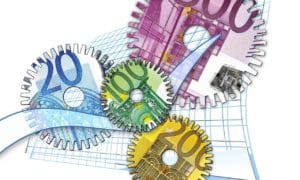The USD forecast for 2018 remains rather bearish despite the American economic growth numbers that are soaring at present. In the last days of the Obama presidency, the signs were already there that the rising employment figures were no fluke. On the back of a strong manufacturing index and surging exports, the US economy has been on a swing for the best part of the halfway through this decade.
It might look rather paradoxical to expect the USD to trade at record lows to other currencies when the economy is witnessing a boon. Let us look at the major indices that support the low USD exchange rate conspiracy.
Surging Oil Prices
In previous decades, the US economy used to quake when oil prices surge until their economic planners devised a way out of the oil quagmire. What exactly did they do? Shale oil was the answer to rising oil prices.
Over the last decade, shale oil rose to prominence and became the stymie in OPEC’s price wars. The US expanded the shale oil producing capacity from 3.5 million barrels per day in 2013 to 5.6 million barrels per day in December 2017. In effect, as oil prices sure, the US pumps more shale oil; making more money and stopping any astronomical rise in prices. Shale oil is profitable to produce when oil prices hit $60 or more.
Surging oil prices might hurt US consumers temporarily, but it leads to more inflows to the US current account from energy taxes and associated levies. Rising shale oil production also diminishes unemployment numbers as more workers are brought into the production process. As such, the country gets wealthier when oil prices surge, at least below the $80 band.
Strong Manufacturing Output
A strong manufacturing output is an economy manager’s delight as this pinpoints more tax inflows, strong earning capacity by workers and lower unemployment figures. In terms of export markets, as production for exports increase, more current account inflows are assured.
As production capacity is maximized by firms across the country, there is more purchasing activity to boost the economy and drive the flow of money.
Flattened Inflation
The US fed has left the interest rates at a flat pedestal for the greater part of the last year. As the US productive indices remained positive, the fed bothered about what to do to augment the inflation rate- tottering at 2.6 percent.
Surprisingly, inflation has been at an all-time low despite the rising consumer disposable income and reduced corporate taxes. The rise in the purchasing power index means more Americans have money to spend and this signals a possible interest rate hike by the fed in March 2018.
USD to trade low until June 2018
In view of the above facts, it is clear that a strong USD will be inevitable. However, this has not been the case as the greenback has dropped to the lowest in five years to the G8 and other emerging market currencies.
Some pundits see the low rating for the USD as a business decision at a time that the US presidency is driven by the shrewd businessman, Donald Trump. A low USD exchange rate means a greater competitiveness for US products in export markets and a better balance of trade position.
A Low USD Exchange Rate Gameplan
The world economy forecast looks yet rosy for 2018 as accentuated at the Davos January 2018 meeting of the World Economic Forum. This view translates to more economic activity and purchasing power globally.
The US is set to reap the bounty as the world prospers this year, and these points to a deliberate policy that favors a low USD exchange rate to boost inflows into the American economy. The Americans are using the underlying art of war strategy- a strong economy is the best anchor for world domination.













